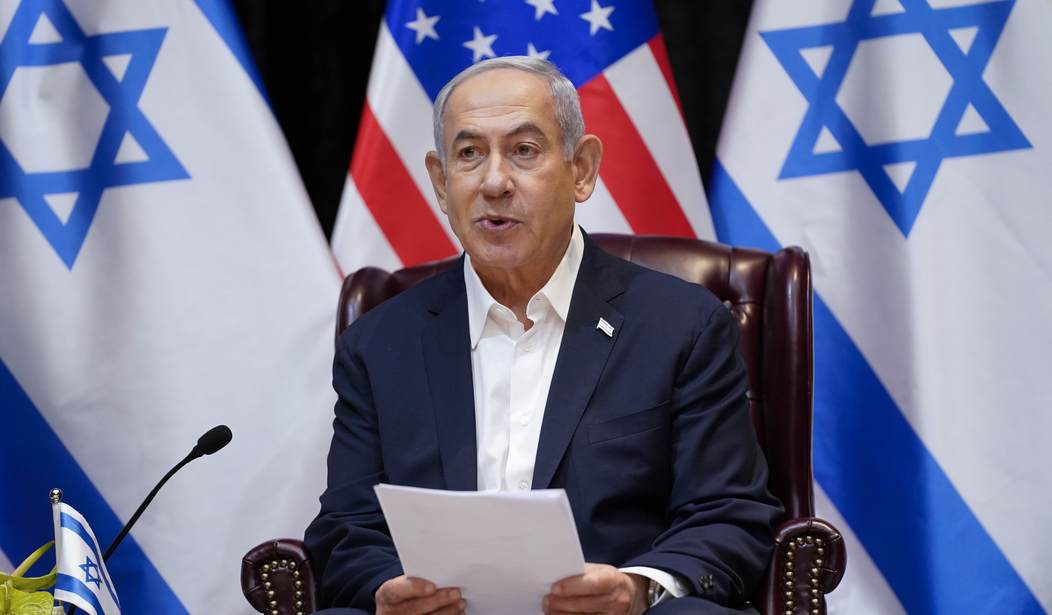Israel's Prime Minister Benjamin Netanyahu closed the week by releasing to the security cabinet and subsequently the media the outline of a plan for what the Gaza Strip will look like and how Israel will handle the enclave once Hamas terrorists and the threat the Iran-backed barbarians pose have been eliminated.
The plans were rolled out for discussion among Israel's government in what the Jerusalem Post called a "brief document" that "divided the situation into three periods: immediate, short, and long-term."
While rejecting Hamas demands for a permanent ceasefire and a complete withdrawal of IDF soldiers from Gaza — essentially the condition that existed before Hamas launched its October 7 invasion and massacre that began the current war — Netanyahu's plan calls for Israel to "maintain operational freedom of action in the entire Gaza Strip, without a time limit, to prevent the renewal of terrorism and to thwart threats from Gaza."
More from the Post on the post-Hamas security arrangement inside the strip:
Israel will have “security control over the entire area west of [the] Jordan [River], including the Gaza border area, to prevent the strengthening of terrorist elements in the Palestinian Authority and the Gaza Strip and to thwart threats [emanating from there] against Israel,” the plan stated.
In addition, according to the plan, “the Gaza Strip will be completely demilitarized.” The plan alluded to a second domestic security force, akin to the police, that would maintain law and order.
It appeared to indicate a model that now exists in the West Bank, where there is a Palestinian police force, while the IDF maintains overall security control.
Recommended
When it comes to Gaza's civilians and their government, Netanyahu's plan lays out a system in which the enclave "will now be controlled by local Palestinians with administrative experience who are not identified with any country or entity that supports terrorism and receives payments from terrorists," explained the Jerusalem Post. "It’s a description that would make it impossible for the Palestinian Authority in its current form to operate in Gaza, given that it provides monthly stipends to Palestinian terrorists jailed by Israel and their families," a system known as "pay-for-slay." Netanyahu's plan, the Post adds, "could eliminate the Day After involvement of Arab countries with connections to Hamas, such as Qatar."
In addition, Netanyahu's plan would seek to create "a comprehensive de-radicalization program for all religious, educational and welfare institutions in the Gaza Strip" to be carried out "as much as possible with the involvement and assistance of Arab countries that have experience in promoting de-radicalization in their territory."
Part of the work to strip radicalizing influences from Gaza included a pledge from Netanyahu to "shut down the United Nations Relief and Works Agency, whose operatives were involved in the October 7 massacre, and whose schools taught terrorism and the destruction of Israel" and "replace [UNRWA] with responsible international aid agencies," added the Post's report.
Seth J. Frantzman, an adjunct fellow at the Foundation for Defense of Democracies (FDD) noted that "it is essential that Hamas be defeated in Gaza and that it no longer has the capabilities to threaten Israel and destabilize the region," adding "a plan for the day after the war is an important step in laying out guidelines for a post-Hamas Gaza. Hamas has exploited Gazan civilians and used them as human shields while stockpiling weapons and building tunnels in civilian areas," Frantzman emphasized.
To test its plan, Israel is reportedly "considering the possibility of 'humanitarian pockets' in the strip, which would entail the distribution of humanitarian aid by local merchants and civil society leaders unaffiliated with Hamas," FDD noted of recent reporting. "'We're looking for the right people to step up to the plate,' an Israeli official told Reuters. The Zeitun neighborhood south of Gaza City, where the IDF operated recently, may be a site to test the new pilot program," FDD's brief added. "Establishing humanitarian pockets would enable local governance unaffiliated with Hamas for the first time since the terrorist group took over Gaza in 2007."
But as Joe Truzman — the senior research analyst for FDD's Long War Journal — noted, "any post-war plan for Gaza may be difficult to implement" because "remnants of Hamas and other terrorist organizations will attempt to thwart efforts to rebuild Gaza under new Palestinian leadership."
Israel Prime Minister Presents Plan for Post-War Gaza
— FDD (@FDD) February 23, 2024
New analysis from @sfrantzman and @JoeTruzman:https://t.co/AlNSnCdUaI

























Join the conversation as a VIP Member